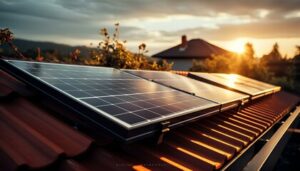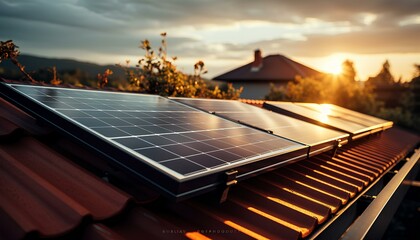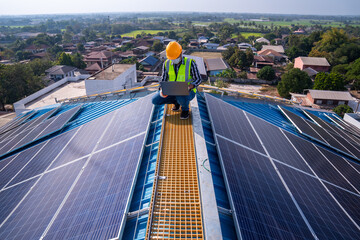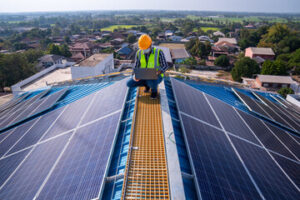You’ve probably seen solar panels in action – they’re often on emergency road signs and call boxes, buoys, and parking lots to power lights. But have you ever wondered how they work?
Solar panels convert sunlight – not heat – into electricity. The energy produced is used to power your home during the day. Contact Solar Montana for professional help.
The cost of solar panels is a significant up-front investment that must be considered carefully. Fortunately, there are federal, state and local incentives that can reduce the initial price. This makes the upfront investment much more affordable. In addition, the lifetime savings potential is significant. Solar panel installation experts can help homeowners calculate energy usage and estimate the size of their system. They can also assist with the selection of supporting equipment like inverters and racking systems.
Solar panels are comprised of silicon cells that convert sunlight into electricity. They are mounted on a metal frame, with wiring elements and an insulating back sheet. An anti-reflective layer is also added to increase efficiency. This allows more of the sun’s rays to be absorbed into the silicon, which in turn produces more electricity. A protective glass covering is also included to prevent chipping and other forms of damage. The panels are connected to each other and to a grid-tied inverter. The grid-tied inverter can provide power to your home or send excess energy to the grid for others to use.
Several factors influence the cost of solar panels, including the type and size of your home, your energy consumption and the amount of electricity you want to offset. Larger homes require more power, leading to larger systems and higher costs. The shape and orientation of your roof will also impact the system’s cost and performance. The best solar panels are made from high-quality materials with a long lifespan.
You can also lower the cost of your solar panel installation by making a few simple choices. The most important is to choose a high-quality brand that has a good reputation for customer service, reputable third-party reviews and warranty length. You should also consider a local installer for convenience and quality control.
During the planning phase, it’s important to take into account your home’s typology and annual energy spending. The solar panel experts will determine the type and size of the system you need, which will affect its cost. They will also assess the site and surrounding environment to ensure that there are no shading issues that could interfere with your solar system’s performance levels. They can also recommend optimisers to compensate for shade and other obstructions.
Energy output
The energy output of solar panels is based on a number of factors. It can vary a lot depending on the type of panel used, and it also depends on how well the panels are installed. It is important to find a professional who can install the solar panels correctly and will ensure that the energy levels remain high.
A solar panel’s energy output is based on the efficiency of its solar cells, which convert sunlight into electricity. Solar cells are made of semiconductor material, usually crystalline silicon. When the sun’s rays hit them, they “knock” electrons off atoms. This process is known as the photovoltaic effect, and it creates a flow of electricity that can be used to power household appliances. Solar panels are comprised of a collection of these solar cells that are linked up in series and protected by a layer of glass. Some types of glass are better for protecting the solar cells than others. The best glass is tough and durable, which helps protect the cells from damage or cracking.
Several factors can affect the energy output of a solar panel, including its orientation, tilt, and temperature. A solar panel that is not oriented or tilted properly won’t produce as much energy. The optimal tilt angle varies throughout the year and depends on the latitude of your location. A tilt angle of about 40 degrees is recommended for the northern hemisphere.
Temperature and cloud cover can also influence the energy production of solar panels. Higher temperatures decrease a solar panel’s voltage, while lower temperatures increase it. In addition, the age of a solar panel can affect its output. The output of a solar panel can also vary depending on the time of day. The amount of energy it produces is greatest in the summer when there are more daylight hours. However, the output can be less if it is cloudy or snowy.
There are a few simple equations that can be used to estimate the potential electricity production of a solar panel. The first is the peak sunlight hour per day, which can be calculated using the sun’s position on the horizon and the number of days in the year. This can be multiplied by the number of solar panels on your roof to calculate its estimated energy output.
Efficiency
Solar panel efficiency is a key metric that indicates the ability of a system to generate electricity. It is based on the amount of sunlight the panels can convert to electrical energy, and it depends on the type of panel, position maintenance, and other factors. Solar panel efficiencies are typically listed in watts (W), and the number is available on the manufacturer’s datasheets.
A solar panel’s rated power is the wattage it can produce in optimal conditions, usually a standard of 1000 W/m2 and 25 degC cell temperature. However, this figure doesn’t account for the performance of a solar panel over time or in real-world conditions. For this reason, it is more accurate to use the average efficiency of a solar panel.
There are a few different ways to calculate solar panel efficiency, but the most important factor is the panel’s base composition. Solar panels are essentially made of silicon, a semiconductor that produces electric currents when exposed to sunlight. To create the electric current, photons from sunlight strike the upper silicon layer of the panel and cause a reaction called the photovoltaic effect. This process funnels electrons through the lower silicon layer and into conductive metal.
The type of substrate on which a solar panel is placed also impacts its efficiency. Research has shown that certain substrates, such as concrete and metal, have lower power outputs than other materials like grass or ground soil. This is because these materials tend to have higher surface temperatures, which decrease the panel’s ability to absorb and dissipate heat.
Moreover, the color of a solar panel’s backsheet can have a slight impact on its efficiency. Black backsheets, for example, reduce efficiency because they absorb more sunlight than white ones. Additionally, the shade of a roof or other structural features can affect how well a solar panel performs.
Solar panels are an investment that will last for 20 to 30 years, and the highest efficiency is critical to getting the most energy from them. For this reason, it’s important to understand how solar panel efficiency is calculated, and how the different factors can affect the final result. By implementing strategies like strategic positioning, strategic tilt angles, and regular cleanings, you can improve the efficiency of your solar panels.
Maintenance
The maintenance costs associated with solar energy are usually very low compared to the initial investment. A proper solar panel installation typically requires only regular cleaning and annual inspections to maintain optimum performance. These routine tasks can prevent issues from becoming costly repairs later down the line. Additionally, they can ensure that you are getting the most value from your renewable energy system.
The main cost associated with solar panel maintenance is cleaning, which typically costs around PS10 per panel in the UK. This is due to the fact that solar panels will accumulate dust and dirt over time, and the rain will not wash it all away. Luckily, this problem is relatively easy to resolve by hiring professional cleaners who will use a soft brush and hose to clear the build-up.
A solar panel installation also requires a two-way meter, which will measure how much electricity is being used and how much is being returned to the grid. This enables homeowners to sell their unused electricity back to the grid and help to offset their energy bills. This is particularly useful in areas with high electricity prices, and is an excellent way to cut your energy costs.
Solar panel maintenance is also essential for maximizing their output, as dirt and grime can cause them to lose energy production by up to 30%. A professional cleaning service will usually include a thorough examination of your roof to identify any potential issues that may be occurring, and will also check the integrity of your solar array.
If you are looking for a solar panel maintenance package, make sure that it includes an annual inspection as part of the plan. Having a professional inspect your solar panels can save you money by catching small problems early and preventing them from escalating into costly repairs down the line. The cost of an annual inspection can range between $150 and $325, depending on the type of roof and the severity of any damage or deterioration.
Unlike traditional appliances and equipment, solar panels require minimal maintenance and provide a great return on investment. This reduced maintenance will lead to lower operational expenses and significant savings on your energy costs. It will also contribute to a cleaner environment, which is a major benefit of switching to solar energy.


